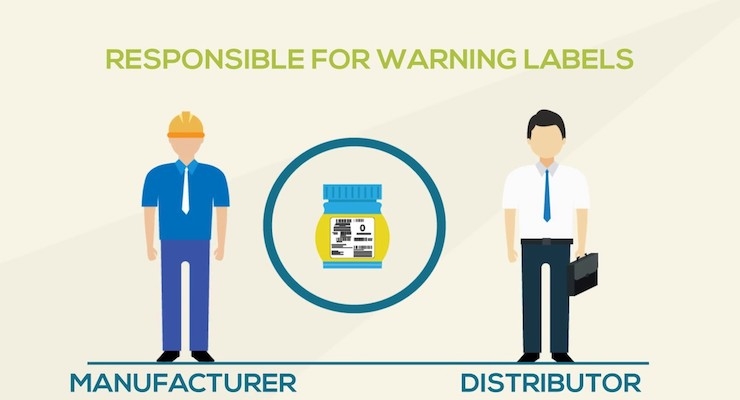The SGIA held a webinar for members of the print and ink industries regarding the new warning requirements for California’s Safe Drinking Water and Toxic Enforcement Act of 1986 – also known as Proposition 65 – which go into effect on Aug. 30, 2018.
Proposition 65 requires the state to maintain and update a list of chemicals known to the state to cause cancer or reproductive toxicity, as noted by the Office of Environmental Health Hazard Assessment, a division of California’s Environmental Protection Agency, which issues the regulations. There are approximately 900 chemicals listed.
Of the nearly 900 chemicals, how many are used in the printing and ink industry?
“My sense would be it would be a very small number,” said George Fuchs, director of Regulatory Affairs for NAPIM, and one of two featured speakers.“You’re looking at trace contaminants that come up. Reactionary byproducts.”
The biggest change, as Marci Kinter, SGIA’s VP of government & business information and webinar moderator, noted is the revision in the warning label.
The old warning labels stated that the product contained a particular chemical, whereas the new warning system must note, “This product can expose you to…” said Gary Jones, assistant VP, environmental safety and health affairs for the Printing Industries of America and a featured speaker.
The word “Warning” must appear bolded in all caps along with a warning symbol (exclamation point inside of a yellow triangle). One of the chemicals must be listed with the business making the selection of which to include.
These changes will establish a “safe harbor” – which include No Significant Risk Levels (NSRLs) for cancer-causing chemicals and Maximum Allowable Dose Levels (MADLs) for chemicals causing reproductive toxicity – and provide flexibility for businesses.
These changes are supposed to provide more specificity and clarity in warnings. This goes for point of display warnings, electronic device or process, labels, and internet purchase warnings. That’s labels, shelf signs and shelf tags at each point of display of the product in brick and mortar stores and in full text or in a clearly-marked hyperlink on the product display page – or otherwise prominently displaying the warning to the consumer prior to completing the purchase – online.
Tailored warnings for specific kinds of exposure must be added as well.
However, Jones cautioned, “Not all chemicals have a safe harbor level.”
“The issue is not the formulation of inks with materials – though there are some that require them – it really is the elimination of non-intentionally added substance that can be there at minimal levels,” Fuchs said. “We’re dealing with these very small concentrations which occur from chemical reactions of raw materials.”
The new warning requirements come for companies with 10 or more employees.
Consumer product and other manufacturers have primary responsibility for providing a warning. This only applies to California-based companies and those who sell products to businesses or consumers in the Golden State.
Similiar legislature in other states – including Massachusetts’ Toxic Use Reduction Act (TURA) – is not as “onerous” as Prop 65, Kinter said. TURA and warnings for children’s’ products in Washington, Vermont, and Oregon don’t require labeling – just the reporting of the chemicals, she added. The list is also much shorter, Kinter noted: just 66 chemicals.
The SGIA provided compliance steps for printing operations:
- Identify which components (e.g., substrates, ink, coating, adhesive, etc.) used to manufacture the product(s) being shipped to California contain a Prop 65 chemical. This can be accomplished by reviewing the Safety Data Sheets (SDSs) usually found in either Section 11, Toxicological Information, Section 15,
Regulatory Information, or Section 3, Composition;
- Note the concentration of the Prop 65 chemical
and compare it to the “Safe Harbor” list
If a Prop 65 chemical is found above “safe harbor” or no “safe harbor” level is identified:
- Contact the vendor and request products that do not contain any Prop 65 chemicals;
- If the chemical cannot be substituted, contact the vendor and request information on anticipated exposure levels and if that would pose a significant risk to someone who would be exposed to them via the finished product;
- If assurances cannot be provided, or the concentrations are greater than the “safe harbor level,” the finished product can be tested;
- If no Prop 65 chemicals are detected or if they are below the “safe harbor level,” then no warnings are required and a compliance certification can be provided.
 (Photo courtesy Wikipedia)
(Photo courtesy Wikipedia)
https://www.inkworldmagazine.com/contents/view_online-exclusives/2018-08-21/prop-65-new-warning-label-changes-on-the-horizon/32817



 (Photo courtesy Wikipedia)
(Photo courtesy Wikipedia)